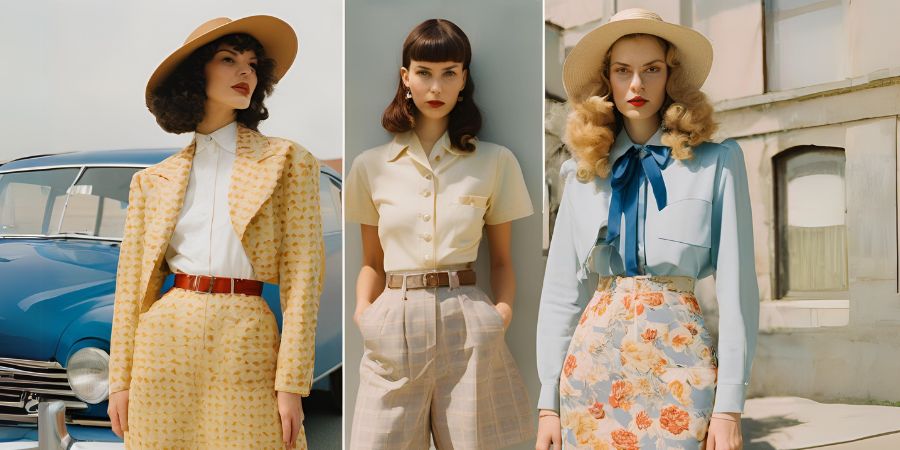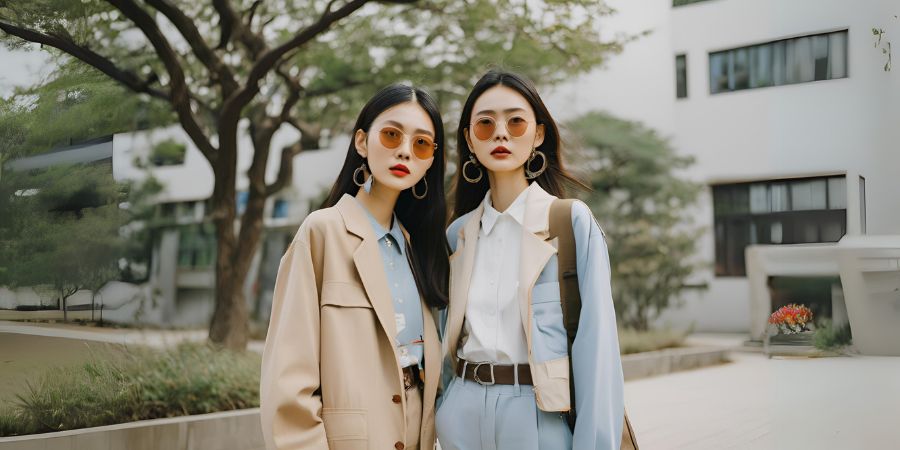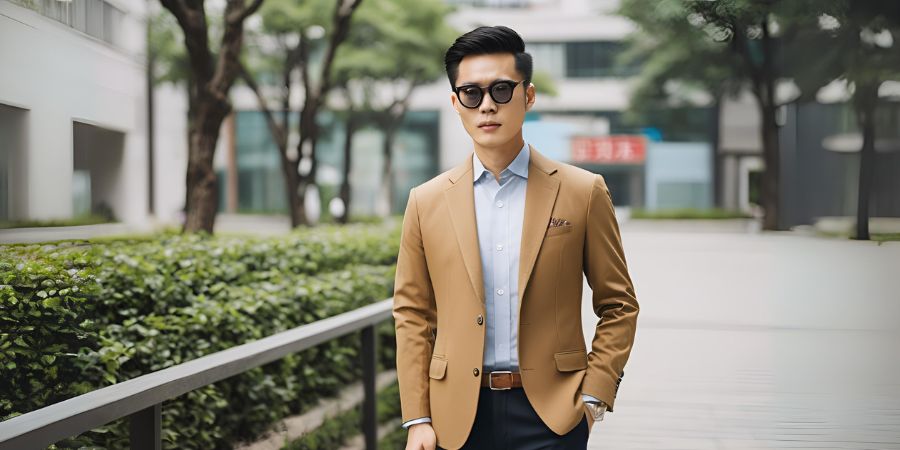Fashion has a unique way of telling stories, and for vintage lovers, these tales are steeped in nostalgia and charm. Vintage fashion offers a doorway into the past, celebrating timeless designs, superior craftsmanship, and styles that remain relevant even decades later. Whether you’re drawn to the elegance of the 1920s, the bold patterns of the 1970s, or the minimalist silhouettes of the 1990s, vintage fashion holds a treasure trove of possibilities for expressing individuality.
Why Vintage Fashion is Gaining Popularity
In recent years, vintage fashion has experienced a significant resurgence. But what is it about vintage clothing that appeals to so many? Let’s explore:
1. Sustainability in Style
Fast fashion’s environmental impact has driven many toward more sustainable choices. Buying vintage aligns with eco-conscious values by promoting the reuse of existing garments. Each vintage piece extends the lifecycle of clothing, reducing waste and conserving resources.
2. Unique and Timeless Designs
Modern fashion often follows trends that fade quickly. In contrast, vintage clothing offers a sense of individuality. Each piece carries a history, and many designs remain timeless, transcending the fleeting nature of contemporary trends.
3. Superior Craftsmanship
Vintage garments often reflect a level of quality that’s hard to find today. From intricate stitching to durable fabrics, these pieces were built to last, offering a testament to the artistry of their time.
A Guide to Building a Vintage Wardrobe
Creating a vintage-inspired wardrobe doesn’t mean dressing in head-to-toe retro styles. It’s about curating pieces that resonate with you and incorporating them into your everyday looks. Here’s how to start:
1. Identify Your Preferred Eras
Vintage fashion spans decades, with each era offering distinctive styles:
- 1920s: Flapper dresses, beaded accessories, and cloche hats.
- 1950s: Full skirts, cinched waists, and polka dots.
- 1970s: Bohemian prints, bell-bottoms, and fringe.
- 1990s: Slip dresses, grunge-inspired flannels, and chunky sneakers.
Research styles from different periods to discover what resonates with your aesthetic.
2. Start with Key Pieces
Building a vintage wardrobe begins with versatile staples:
- A classic leather jacket or trench coat
- High-waisted jeans
- A vintage handbag or clutch
- Timeless accessories, such as pearl necklaces or brooches
3. Mix Vintage with Modern
Blend vintage finds with contemporary clothing to avoid looking like you’re in costume. Pair a 1970s blouse with modern jeans or style a 1950s skirt with a sleek, minimalist top.
Where to Find Authentic Vintage Clothing
Finding authentic vintage pieces requires patience and a keen eye. Here are some popular sources:
1. Thrift Stores and Flea Markets
Local thrift stores and flea markets are treasure troves for vintage enthusiasts. You’ll often find hidden gems at affordable prices.
2. Online Vintage Shops
Websites like Etsy, Depop, and specialized vintage boutiques offer curated selections of vintage clothing, often sorted by era or style.
3. Estate Sales and Auctions
Estate sales can be a goldmine for authentic vintage items. Auctions also provide access to rare and high-quality pieces.
4. Vintage Pop-Up Events
Many cities host pop-up events or markets dedicated to vintage fashion, allowing you to see and feel the garments in person.
Styling Tips for Vintage Lovers
Wearing vintage doesn’t have to be intimidating. Here are tips to help you style your pieces effortlessly:
1. Focus on Fit
Vintage sizing often differs from modern measurements. Tailoring is your best friend for achieving a flattering fit.
2. Experiment with Layers
Layering is a great way to modernize vintage pieces. Try pairing a 1980s oversized blazer with a contemporary crop top and trousers.
3. Accessorize Thoughtfully
Accessories can make or break a vintage-inspired outfit. Opt for era-appropriate accessories to enhance your look without overpowering it.
4. Confidence is Key
The most important aspect of styling vintage clothing is confidence. Embrace your unique look and wear it with pride.
Caring for Your Vintage Wardrobe
Preserving vintage clothing requires special care to maintain its longevity. Here’s how to keep your pieces in pristine condition:
1. Proper Storage
Store garments in a cool, dry place away from direct sunlight. Use padded hangers for delicate items and acid-free tissue paper for folding.
2. Gentle Cleaning
Handwashing is often the safest option for vintage clothing. Use mild detergents and avoid harsh chemicals.
3. Repair and Restore
Minor tears or loose buttons can be repaired to extend the life of your vintage garments. Seek professional restoration for more delicate or intricate pieces.
The Emotional Connection to Vintage Fashion
For many, vintage clothing is more than just fabric; it’s a connection to history. Wearing a dress from the 1940s or a jacket from the 1960s carries the essence of its time, sparking curiosity and appreciation for the stories behind each piece. Vintage fashion also fosters a sense of community among enthusiasts, who share a love for rediscovering and preserving the past.
FAQs
What are the fashion trends for 2025?
The fashion trends for 2025 embrace a blend of nostalgia and futuristic elements. Expect bold, oversized silhouettes, statement tailoring, and the resurgence of statement accessories. Sustainable and eco-friendly fashion continues to dominate, with more designers focusing on creating timeless, versatile pieces that can be worn year after year. Tech-infused fabrics, such as those with integrated LED lights or responsive materials, are also becoming more prevalent. Bright colors, particularly neon, will be prominent, alongside minimalist designs for a balanced look.
What is the fashion color trend for 2025?
The fashion color trend for 2025 focuses on vibrant, energizing hues as well as serene, calming tones. Expect bold colors like neon pink, electric blue, and radiant yellow to take center stage, while soft pastels and earthy tones provide balance. Pantone’s Color of the Year for 2025 is anticipated to be a shade of deep green, symbolizing renewal, growth, and sustainability. These color trends are designed to evoke both creativity and harmony, fitting the increasing focus on individuality and well-being in fashion.
What year is vintage fashion?
Vintage fashion refers to clothing that is typically 20 to 100 years old. Generally, vintage pieces come from eras such as the 1920s to the 1990s, with many people focusing on styles from the 1950s to 1980s. The term “vintage” is used for garments that have a certain age and quality, offering a glimpse into the fashion and culture of past decades.
Is retro fashion coming back?
Yes, retro fashion is making a significant comeback. Styles from the 1970s, 1980s, and 1990s are currently trending, as younger generations embrace the bold colors, patterns, and silhouettes that defined these eras. Retro-inspired pieces, such as high-waisted jeans, oversized blazers, and neon accessories, are seen in both street style and high fashion collections. This resurgence of retro fashion is a testament to the cyclical nature of fashion trends, where past styles are continuously revisited and reinterpreted for modern tastes.
Final Thoughts
Vintage fashion is a celebration of individuality, sustainability, and timeless beauty. For vintage lovers, it’s not just about wearing clothes; it’s about embracing a lifestyle that values history and craftsmanship. Whether you’re a seasoned collector or just beginning your journey, the world of vintage fashion offers endless inspiration. So, dive into the past and let your style tell a story that’s uniquely yours.



